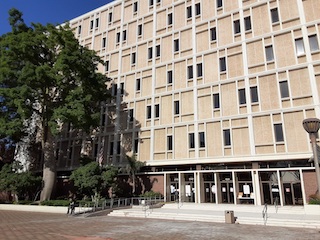Award Recipient
Top 100 Trial Attorneys in the United States
Contact Us for a Free ConsultationSummary in 50 Words or Less: A change of venue request is evaluated according to five considerations, none of which is most important and not all are required to be applicable. Adverse publicity is usually the most common issue.
 Pomona Courthouse
Pomona Courthouse
- Nature and Gravity of the Offense. The “nature” of the offense refers to the peculiar facts or aspects of a crime that makes the case sensational or otherwise brings it to the consciousness of the community. The more sensational the portrayal of the facts of a case, i.e. the Menendez brothers, the more likely it is that jurors will notice, remember, and be prejudicial by publicity. Corona v. Superior Court (1972) 24 Cal.App.3d 872, 877; People v. Ramirez (2006) 39 Cal.4th 398, 432 (no change of venue in “Night Stalker” case). The “gravity” refers to its seriousness in the law and to the possible consequences to an accused in the event of a guilty verdict, i.e. life in prison or a death sentence.
- Nature and Extent of News Coverage. The extent of news coverage is quantitatively measured by items like the number of newspaper articles and electronic coverage, including television, radio and Internet coverage such as blogs and web content posted by law enforcement and other government agencies. The more extensive the news coverage, the more likely a change of venue is appropriate. However, when the news coverage is so geographically widespread and pervasive throughout the state, a judge may decide that a change of venue may do no good. For example, there was high local notoriety to the people of Oklahoma in the Oklahoma City bombing case, but far less local notoriety in the Unabomber case, which was tried in Sacramento. The nature of coverage relates to the qualitative nature of the coverage (i.e. is it sensational, inaccurate or factual) and more to if news coverage continues strong up to the time of trial (this would weigh in favor of a change of venue) or abates over time to the time of trial.
- Size and Characteristics of Community. The greater the size of the community from which the jury panel is drawn, the less the chance that a change of venue motion will be granted. See People v. Famallaro (2011) 52 Cal.4th 1, 23 (Orange County); People v. Howard (1992) 1 Cal.4th 1132, 1167 (court observed that Tulare County, with 253,000 residents, was 20th most populous county among the 58 in the state and that most change of venue motions succeeded in substantially smaller communities).
- Status of Defendant in Community. If there is something about defendant that makes him or her peculiarly subject to the hostility of the local community, venue is more likely to be changed. Williams v. Superior Court (1983) 34 Cal.3d 584 (defendant was a non-resident and an African American – only 402 of the county’s 117,000 residents were African American); Frazier v. Superior Court (1971) 5 Cal.3d 287, 293 (widespread distrust of hippies).
- Status of Victim in Community. Obviously, the status of the victim in the community can arouse community passions against defendant, arguing in favor of a change of venue. See, e.g., Williams v. Superior Court (1983) 34 Cal.3d 584 (victim was a member of a prominent family with a good reputation); Frazier v. Superior Court (1971) 5 Cal.3d 287, 293 (victim was a well-known physician whose funeral was one of the largest in county history); Maine v. Superior Court (1968) 68 Cal.2d 375 (community raised funds out of sympathy for victims’ families).
For more information about change of venue issues, please click on the following articles: